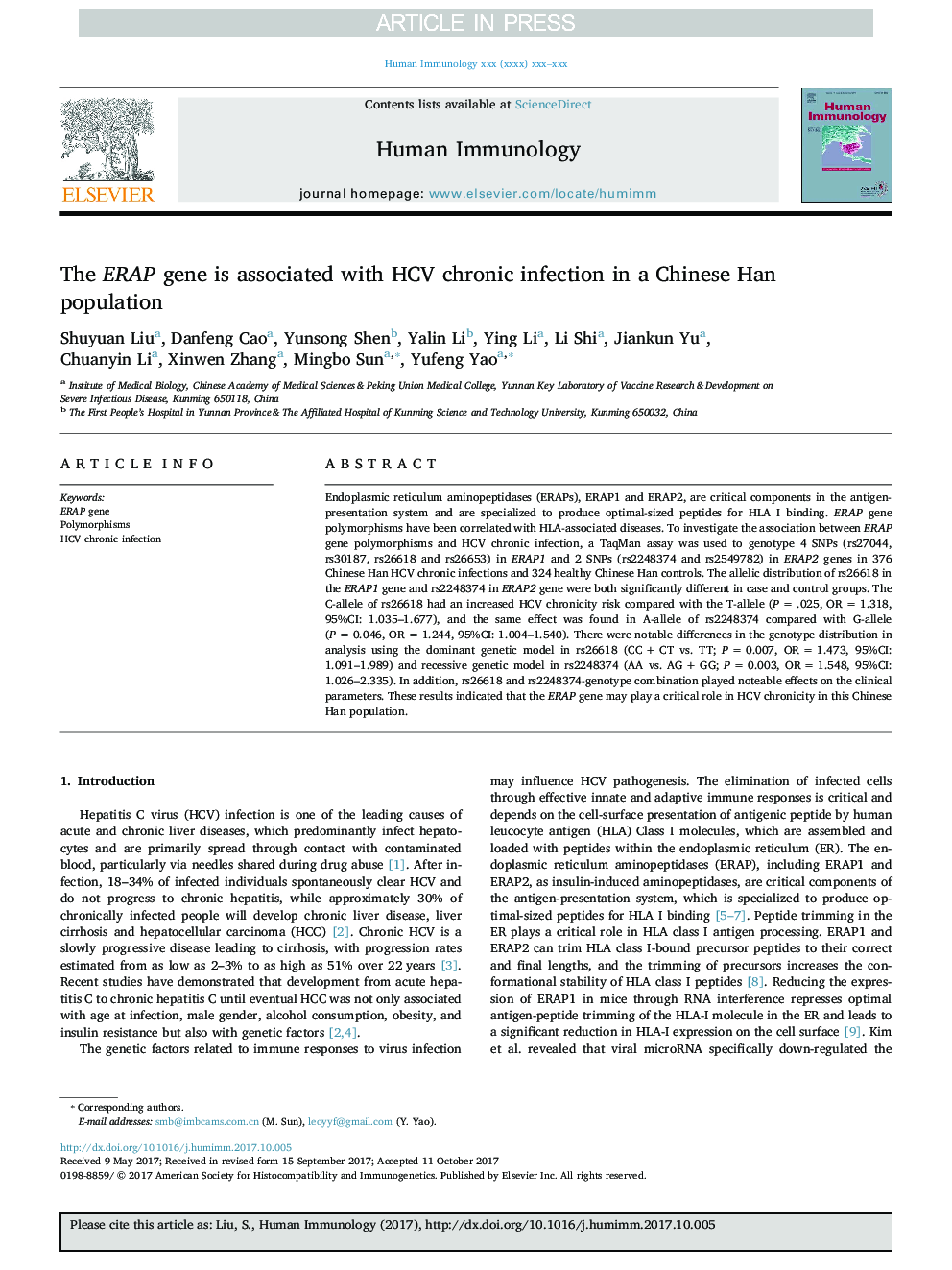| Article ID | Journal | Published Year | Pages | File Type |
|---|---|---|---|---|
| 8737724 | Human Immunology | 2017 | 8 Pages |
Abstract
Endoplasmic reticulum aminopeptidases (ERAPs), ERAP1 and ERAP2, are critical components in the antigen-presentation system and are specialized to produce optimal-sized peptides for HLA I binding. ERAP gene polymorphisms have been correlated with HLA-associated diseases. To investigate the association between ERAP gene polymorphisms and HCV chronic infection, a TaqMan assay was used to genotype 4 SNPs (rs27044, rs30187, rs26618 and rs26653) in ERAP1 and 2 SNPs (rs2248374 and rs2549782) in ERAP2 genes in 376 Chinese Han HCV chronic infections and 324 healthy Chinese Han controls. The allelic distribution of rs26618 in the ERAP1 gene and rs2248374 in ERAP2 gene were both significantly different in case and control groups. The C-allele of rs26618 had an increased HCV chronicity risk compared with the T-allele (PÂ =Â .025, ORÂ =Â 1.318, 95%CI: 1.035-1.677), and the same effect was found in A-allele of rs2248374 compared with G-allele (PÂ =Â 0.046, ORÂ =Â 1.244, 95%CI: 1.004-1.540). There were notable differences in the genotype distribution in analysis using the dominant genetic model in rs26618 (CCÂ +Â CT vs. TT; PÂ =Â 0.007, ORÂ =Â 1.473, 95%CI: 1.091-1.989) and recessive genetic model in rs2248374 (AA vs. AGÂ +Â GG; PÂ =Â 0.003, ORÂ =Â 1.548, 95%CI: 1.026-2.335). In addition, rs26618 and rs2248374-genotype combination played noteable effects on the clinical parameters. These results indicated that the ERAP gene may play a critical role in HCV chronicity in this Chinese Han population.
Keywords
Related Topics
Life Sciences
Immunology and Microbiology
Immunology
Authors
Shuyuan Liu, Danfeng Cao, Yunsong Shen, Yalin Li, Ying Li, Li Shi, Jiankun Yu, Chuanyin Li, Xinwen Zhang, Mingbo Sun, Yufeng Yao,
